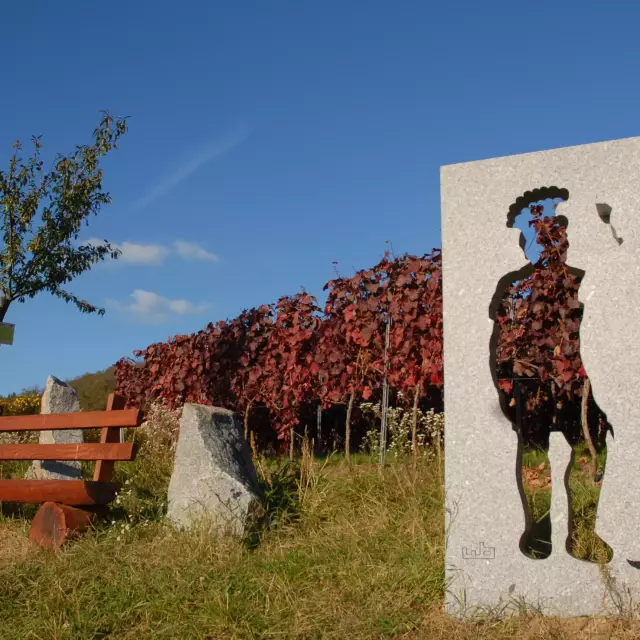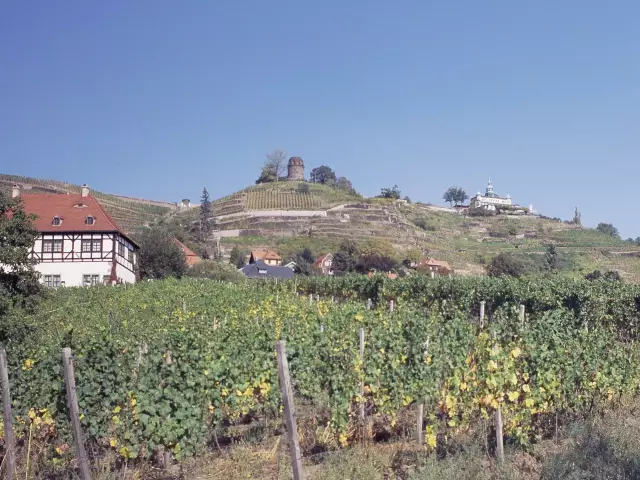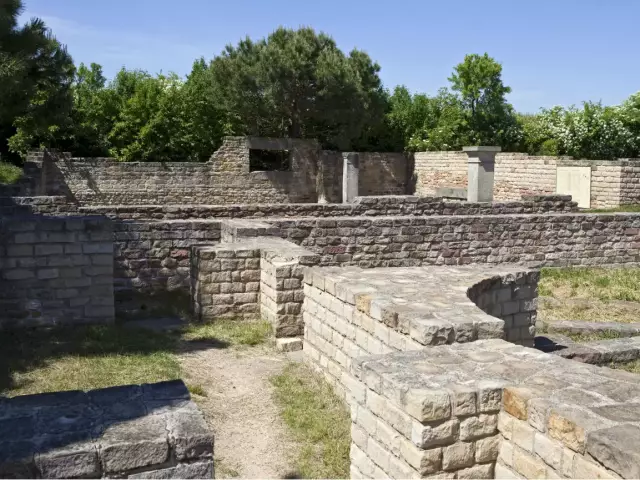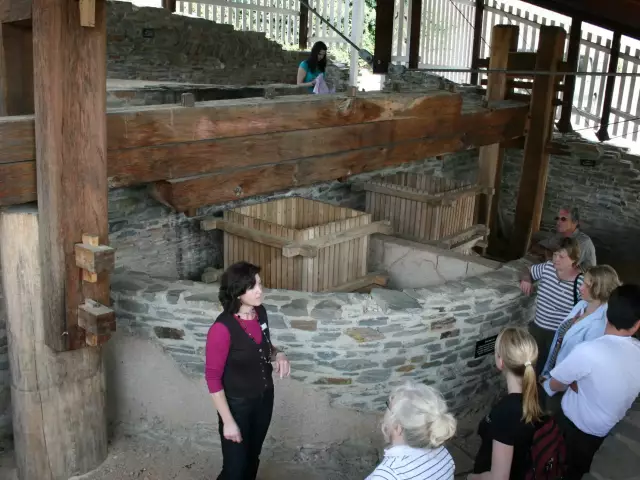Wine and rock

Wine and art form a unique combination here: On the "Wine and Stone" adventure trail in Heppenheim an der Bergstraße, the cultural history of wine is told through works of art.
Over a length of 6.9 kilometers, there are a total of 70 stations on the subject of viticulture - this is probably a unique record in Europe. You can spend days here and still not have finished learning: The year of the winegrower, Roman history, conservation breeding, vine nutrition, phylloxera, vineyard cottages - there is no topic that is not presented here in an informative and exciting way. The highlight of the circular route, however, are the 14 works of art that give artistic form to the key stages in the history of viticulture on the Bergstrasse.
The Romans discovered the beauty and mild climate of the "strata montana", the mountain road, 2,000 years ago. They planted the first vines on the sunlit hills, which were first mentioned in a document from 755 - in the codex of Lorsch Monastery, of course. This makes Heppenheim the oldest wine-growing community on the Bergstrasse - and the largest: of the 450 hectares of vineyards in the Hessische Bergstrasse wine-growing region, 230 hectares are located in Heppenheim and its districts alone. The region's largest wine producer, Bergsträßer Winzer eG, founded in 1904, is also based here, with around 500 winegrowing families cultivating around 265 hectares of vineyards along the entire Bergstrasse.
Heppenheim was therefore the logical choice for the "Wine and Stone" adventure trail, which was opened on April 27, 2007. A unique project was created in cooperation with the UNESCO Bergstrasse-Odenwald Geo-Nature Park and the Bergstrasse winegrowers. The starting point is the Winzerbrunnen, built in 1967, from where the trail leads through the Steinkopf, Centgericht and Stemmler vineyards and crosses the Heppenheim vineyards. First of all, the view of Starkenburg Castle, which was once built to protect Lorsch Abbey, cannot be overlooked. And then it starts: soil profiles, the origin of the vine, soil protection, integrated viticulture, autochthonous grape varieties, oak barrels, cork oaks and climate change - detailed and clear information boards along the way provide information about everything.
In between, however, works of art repeatedly attract the attention of hikers: the cycle of nature is depicted in an oversized rotunda, a monument to the "Strata Montana" and the old grape varieties is set in stone, the "thanks to the vines" is symbolically illustrated and the theme of wine and stone is taken literally.
One of the works of art embeds wine bottles in the stone - a symbolic link between terroir and vines. A Roman monument in the form of a centurion also stands on the Bergstrasse and commemorates the victory over phylloxera: an oversized louse, impaled on a lance, towers far above the vineyards. And finally, a giant wine and stone bottle explains the most important types of rock in the Bergstrasse georegion - a true symbol of the connection between wine and stone.




